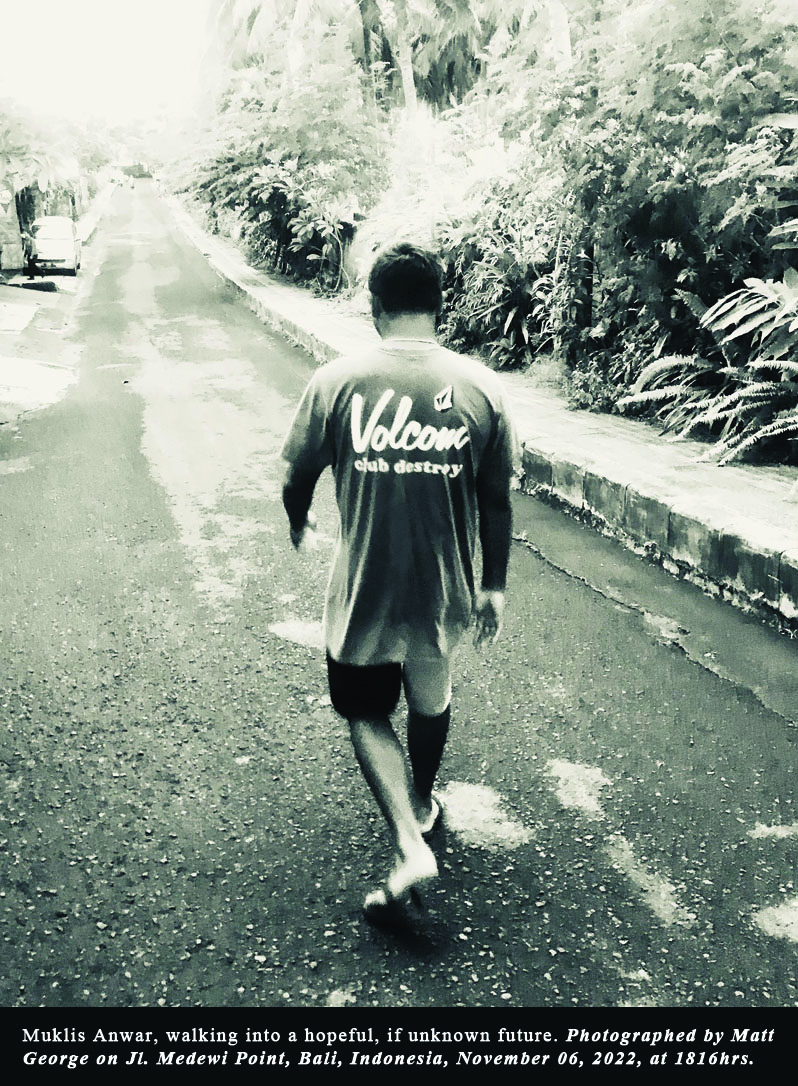LIFT OFF WE’RE GONNA NEED A BIGGER RUNWAY

Along with the tow-in method of big-wave riding, aerial surfing split off into something like to its own distinct branch of the sport during the 1990s, with aerial specialists and aerial-only competitions. Skateboarders riding the banked walls of empty swimming pools began doing aerials above the rim in about 1977; surfers, including Florida’s Matt Kechele and Kevin Reed of California, initiated their version of aerials in the late ‘70s. Progress was slow. Surfboards couldn’t be gripped and handled in the air as easily as skateboards, and waves, unlike pools, change shape constantly. The “chop-hop,” an early and rightfully maligned aerial variant, was enough to keep most progressive surfers working on deep turns and tube rides.

A few surfers continued to push forward with the aerial, however, including Davey Smith, John McClure, and Bud Llamas of California, along with Australia’s Cheyne Horan, Hawaii’s Larry Bertlemann, and most notably Martin Potter of South Africa. Florida’s John Holeman was an early and influential aerial specialist in the late 1980s and early 1990s, whom many credit as the first to successfully land a 360-degree aerial rotation. Bodyboarders, Hawaii’s Mike Stewart in particular, also made key contributions to first-generation aerial surfing.

But it was the tattooed and punkish Christian Fletcher of San Clemente, California, along with neighbor Matt Archbold, who gave aerial surfing much of its present-day shape and character; both surfers were not only lifting four or five feet above the crest by the late ‘80s (and regularly completing their lower-flying attempts), but establishing the aerialist as a kind of surf guerrilla. Fletcher also introduced the surfing world to the colorful skateboard-invented aerial lexicon, including “mute air,” “indy air,” “slob air,” “madonna,” and “stalefish.”
Future world champion Kelly Slater of Florida brought aerials into the surfing mainstream in 1990, as leader of the teenage New School group, which included Shane Dorian, Rob Machado, Shane Beschen, and Ross Williams, all first-rate aerialists. The air movement also got a push from the footstrap-wearing tow surfers, who were able to fly higher and in more complex patterns than any unstrapped paddle-in rider.

Not everybody was thrilled by the new direction. Surf journalist and former world tour pro Dave Parmenter described the aerial crew as “flying squirrels,” and correctly noted that the success rate on the towering air moves shown in the magazines was virtually nil. Fabled power surfers Gary Elkerton and Sunny Garcia were also dismissive of aerials. “Good surfing,” Elkerton said, “is all about power, speed and flow. The other stuff isn’t real surfing.” Yet by the early-2000s, the aerial had become a staple maneuver for young pros and was all but a required element for success in surf contests.
Specialized aerial-only “airshow” contests were introduced in 1996 in Santa Cruz, California, and by 2002 the combined prize money for the small but entrenched airshow circuits worldwide was more than $250,000. The gradual acceptance of the aerial among the competitive surf circuit, however, eliminated most air-only contests just a few years later.
While virtually all young pro surfers by the 2010’s were expert aerialists, some of the most inventive moves were being performed by a small group of dedicated high flyers, some world tour pros, others not, including Josh Kerr, Dane Reynolds, Julian Wilson, Gabriel Medina, Kolohe Andino, and Chippa Wilson. In 2010, Flynn Novak of Hawaii became the first surfer to land a back flip. Today it is Gabriel Medina, Felipe Toledo, John John Florence and Jordy Smith who lead the charge.



Comments
Post a Comment